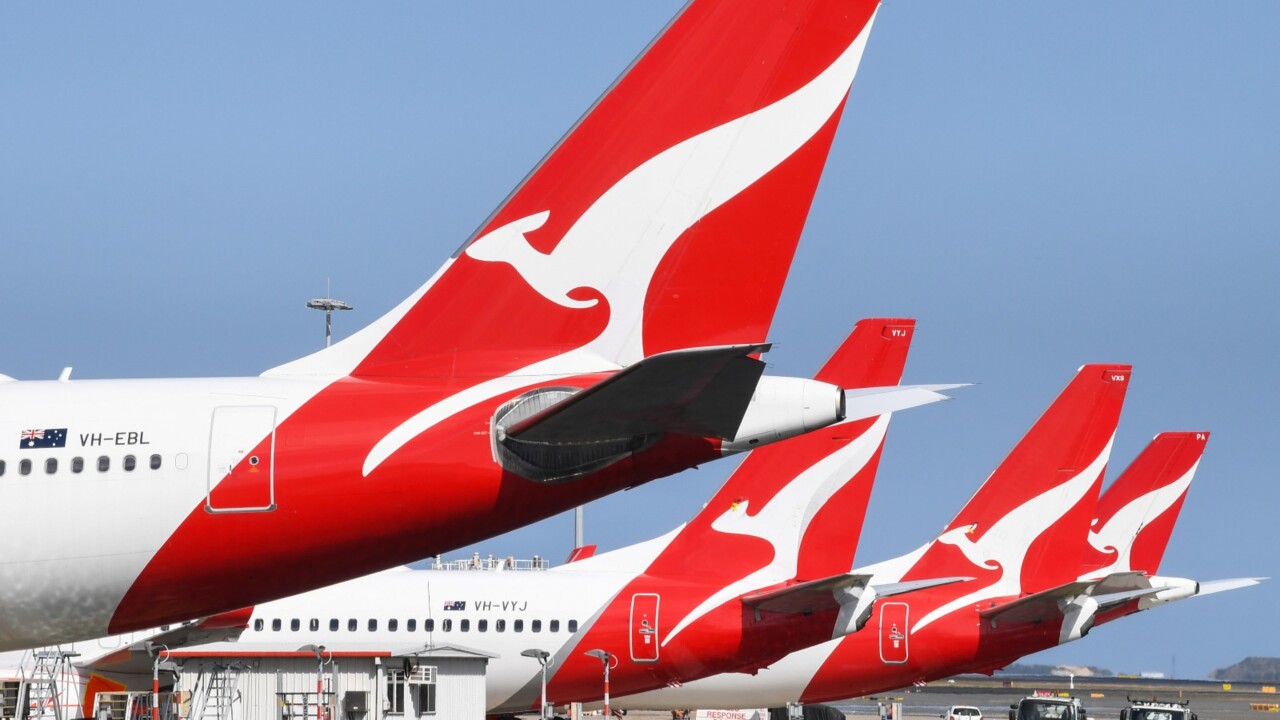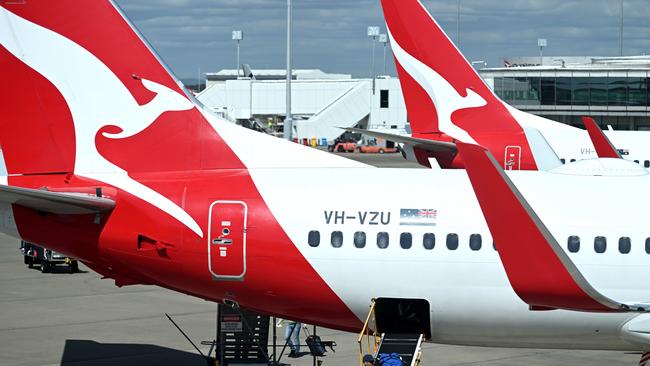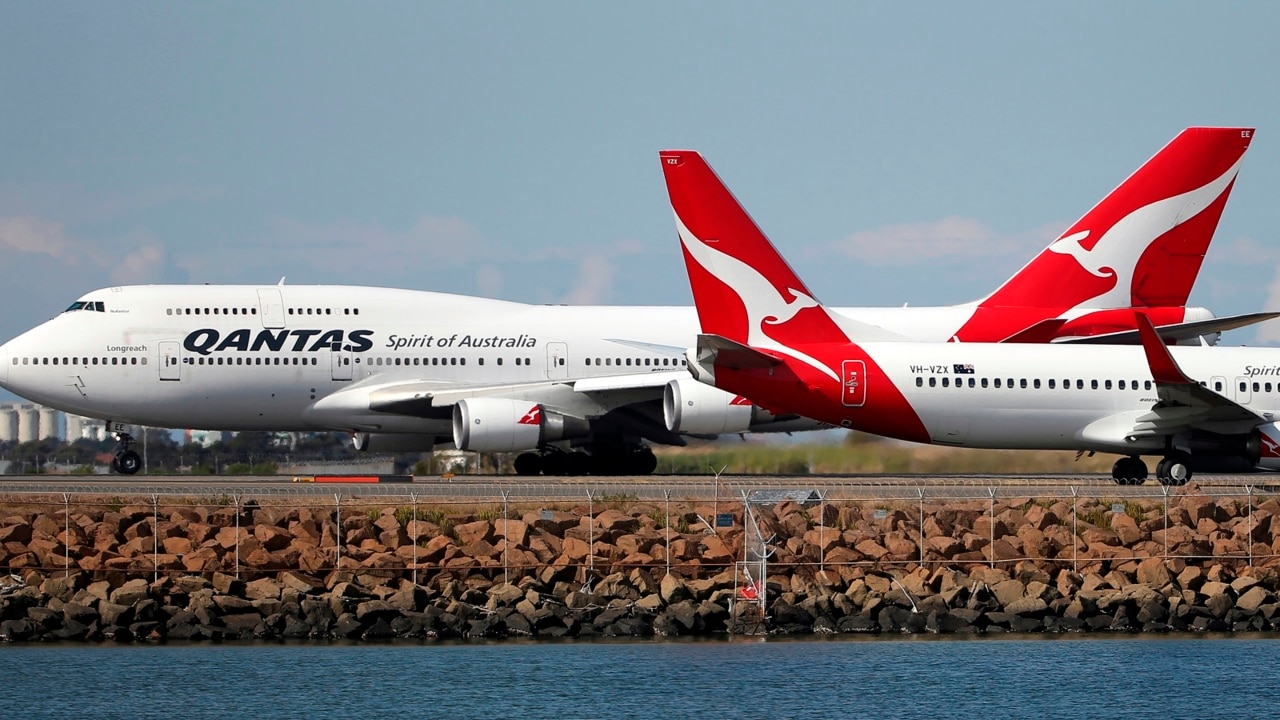Jetstar records biggest loss of the group, Alan Joyce promises to improve service levels
Qantas says it has mapped out a path to financial recovery aided by stronger demand for travel and higher fares after posting a full-year loss of $1.86bn.

Qantas says it has mapped out a path to financial recovery aided by stronger demand for travel and higher fares after posting a full-year loss of $1.86bn – its third consecutive annual loss.
The airline’s result for the 12 months to June 30 was in line with expectations and took the its total losses before tax throughout the pandemic to almost $7bn.
Once the airline’s star performers, Qantas Domestic and Jetstar slid further into the red with losses of $765m and $795m respectively.
Qantas International also finished the year in the negative, leaving Qantas Loyalty the only profitable segment of the group.
Conceding that the figures were “staggering” and the past year “challenging for everyone”, Qantas chief executive Alan Joyce was insistent the airline was now positioned for a vastly better 2023.
“The pandemic has tested everyone … and we’re the first to admit we haven’t got everything right,” Mr Joyce said.
“But with the help of our people we’re getting back to our best and, given what we have in the pipeline, it will get even better from here.”
With the airline’s fuel bill set to exceed 2019 levels by $1bn despite significantly less flying, Mr Joyce said airfares would have to rise.
Domestic fares would climb another 10 per cent, and international fares by 20 per cent, in a further blow for travellers after months of disruptions. Fewer flights were also in the pipeline, with domestic capacity set to be cut to 93 per cent of 2019 levels by December, down from 110 per cent in April.
International flights were slowly increasing, with the expectation of reaching 75 per cent of pre-pandemic levels in December, and 100 per cent at the end of next year.
Performance issues were progressively being addressed, Mr Joyce said, with the CEO predicting the vast majority of flights would be hitting their schedule by September.
He said much work was occurring behind the scenes to bring Qantas back to its best. “This includes hiring more people, rolling out new technology and reducing domestic flying so we have more sick leave cover,” he said.

Forward revenue was looking particularly healthy at $7.9bn, up $2bn on six months ago, and net debt slid from a pandemic high of $6.4bn to $3.9bn, below the optimal target range.
Qantas also announced a capital return for shareholders, in the form of a $400m share buyback.
Mr Joyce said it was appropriate, given that shareholders had provided $1.4bn at the start of the pandemic to support its recovery plan.
The surprise move divided the market, with Jefferies chief equity analyst Anthony Moulder suggesting the buyback “reflected the strength of Qantas’s balance sheet and demand outlook”.
But Forager Funds Management chief investment officer Steve Johnson questioned the timing of a share buyback.
“As shareholders, we generally welcome companies returning cash, but in the current environment of significant public perception issues for Qantas we would have preferred they wait for another six to 12 months,” Mr Johnson said on Thursday.
“It unnecessarily opens them up to criticism of shareholders benefiting while customers are suffering. They should be focused on fixing the problems first.
“The guidance provided for 2023 was cryptic, but seems to be suggesting they are tracking modestly ahead of pre-Covid profitability. We are expecting at least that for the year.”
Macquarie equity analysts told clients the outlook showed “confidence in a rational operational environment” given the recovery in demand for travel. The investment bank placed a $6.60 price target on the airline’s share price.

In an early note to clients, analysts at RBC Capital Markets noted Qantas International had beaten earnings expectations, with record freight performance and a strong increase in passenger demand as restrictions eased, helping the division to post EBITDA well above its forecasts. But Jetstar came in below its expectations, posting a loss of $448m compared to a forecast of a $191m loss by the analysts.
Qantas expects Jetstar to return to profit in the three months starting on April 1 next year.
Qantas Loyalty reported earnings in line with expectations – up 7 per cent at $351m. It was the third consecutive year that the division contributed “more than $1bn of gross receipts towards group cash result”, RBC analysts told clients.
In a briefing, Mr Joyce did not respond to a suggestion that performance issues had put Qantas at risk of losing customers to Virgin Australia and Regional Express, both of whom announced fleet expansions this week.
He said Qantas’s customer satisfaction rating was “holding up really well relative to Virgin”, adding that “they’ve got equally as bad performance”.
“This is an industry problem, let’s not pretend it’s just a Qantas problem,” Mr Joyce said of flight delays, cancellations and mishandled bags.
“Our competitive position if anything is strengthening, and the capacity cuts we’re doing is happening across the industry. Virgin is taking out significant amounts of capacity going forward as well, to help alleviate their operational issues.”
Following on from a $50 travel credit for every Qantas frequent flyer released on Sunday, a series of lounge upgrades were announced as part of a $400m customer care package.
Adelaide Airport was in line for a new business lounge and a refreshed Chairman’s Lounge; an upgrade of the Auckland lounge was flagged, along with improvements to facilities in Port Hedland and Rockhampton. A new route from Auckland to New York was scheduled from June next year, providing an alternative to transiting through Los Angeles.
Mr Joyce said it was likely that Qantas would maintain the route when non-stop flights from Australia’s east coast to New York began in 2026 or 2027.
“When we do Sydney-London (non-stop), we think we’ll still do Sydney-Singapore-London as well, and when we do Sydney to New York we think there probably will be a market for Auckland-New York because there will have been a lot of market growth by then,” he said.
Employees were not forgotten, with the promise of a more generous staff travel scheme and $50m for pay increases, bringing the average non-executive salary to more than $100,000.
Transport Workers Union national secretary Michael Kaine was unimpressed, saying Qantas would do everyone a favour if it returned “good quality jobs and experienced workers to airports”.
“If Qantas management really valued its employees, it would actually invest in them by insourcing essential jobs and lifting wages and conditions without strings attached,” Mr Kaine said.
Qantas shares closed up 32c for the day at $4.86, their highest level since early June.








To join the conversation, please log in. Don't have an account? Register
Join the conversation, you are commenting as Logout